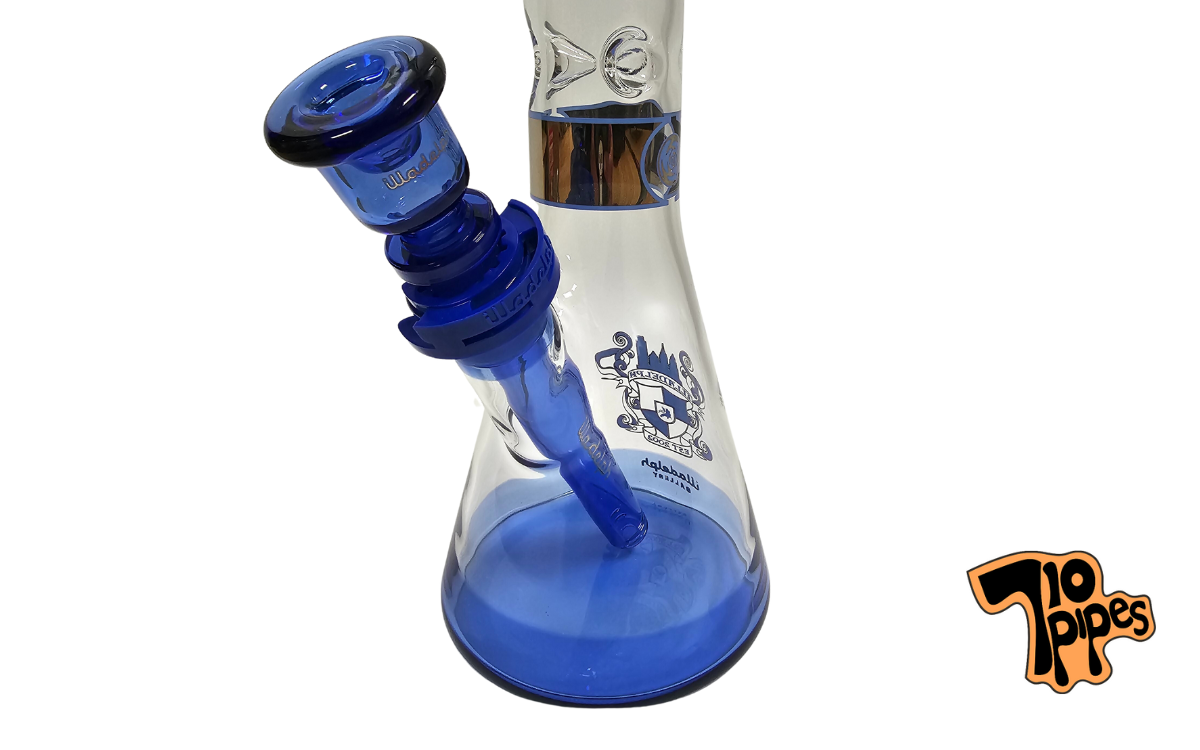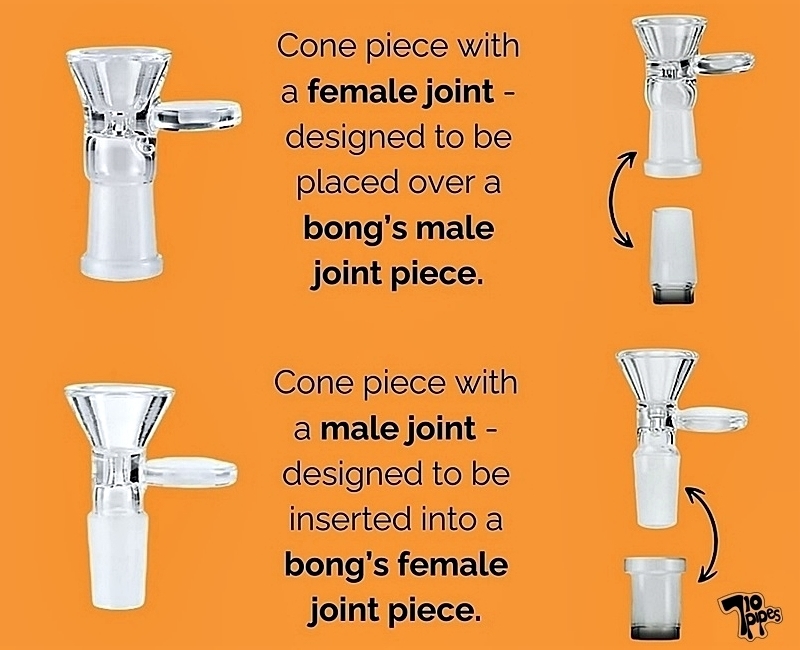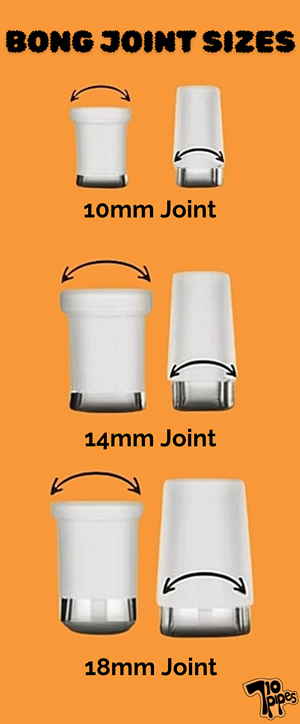
While bongs have encountered stiff competition from vapes recently, hundreds of thousands are still sold every year. Many bong owners ultimately decide to upgrade their bong after owning it for some time, but to do that, they need to know the gender and size of the bowl joint.
Here’s a tip: if you might want to upgrade your bong bowl in the future, purchase a bong with the most common joint size, as this will provide you with the most upgrade options.
In this post, the team at the 710 Pipes pipe shop in Denver explains how to measure the joint size of your bong and how to determine its gender.
Identifying Joint Genders
Before you dole out money to upgrade your bong, you’ll need to know the gender of the bowl joint. Fortunately, there are only two genders when it comes to bowl joints, so there’s no need to engage in heated debates on the subject.
All bongs have either male or female bowl joints. That is the place where the bowl connects to the bong. Male joints are those that go into female joints, and female joints wrap-around male joints. Therefore, if the bong end of the joint is female, your new bowl will need to have a male end, and if the bong end is male, the new bowl will need a female end.

The Standard Bowl Joint Size
The most common bowl joint size on contemporary bongs is 14mm. Between ⅔ and ¾ of all bongs sold in the US today have a bowl joint of that size. So even if you didn’t check when you bought your bong from our headshop, there’s a better than even chance it has a 14mm bowl joint.
There was no edict handed down from on-high stating that bong bowl joints must be 14mm; designers just settled on this size over time as it seems optimal for facilitating airflow. Nonetheless, if your bowl joint is a less common size, you still have plenty of upgrade options.
Other Common Joint Sizes
A fair number of bongs also have 10mm or 18mm bong joint sizes. While there may be a few bespoke bongs out there whose bong joints are individual to them, 99.9% of all bongs have either 10mm, 14mm, or 18mm bowl joints.
10mm Joints
This size joint is typically referred to as a “micro” or “nano” joint. These are usually found on the smallest dab rigs designed to optimize portability. It’s extremely unlikely you will encounter a 10mm bong bowl joint on a standard bong.
| CHARACTERISTICS | PROS | CONS |
|---|---|---|
| Smallest size | Concentrated hits | Limited water filtration |
| Often found in smaller bongs and dab rigs | Discreet design | Fragile due to small size |
| Ideal for solo use and use on-the-go | Travel-friendly | Less airflow than larger joints |
14mm Joints
As we mentioned above, between ⅔ and ¾ of all bongs will have a bowl joint of 14mm. So the odds are yours does, too. That said, if you’re curious as to whether your bong has a 14mm joint, just dig a dime out of your pocket and compare. If the dime can fall into the joint, then the joint should be 18 millimeters in diameter. If the joint is a little more than half the size of the dime, then the joint is 10mm. If the joint is just a wee bit smaller than the dime, it’s 14mm.
| CHARACTERISTICS | PROS | CONS |
|---|---|---|
| Medium-sized | Compatible with various attachments | Not as discreet as 10mm joints |
| Standard for many bongs and accessories | Widely available | Less airflow than 18mm joints |
| Ideal for everyday use | Balanced hit size |

18mm Joints
You’re only going to find an 18mm joint on a really large bong. They’re needed on huge bongs in order to increase the airflow and enable the effective operation of the bong. Now, whether you have the lung capacity to draw the needed amount of air is another matter.
In short, whatever the size of your bong bowl joint, you will need an opposite-gender part of the same size if you plan to replace the bowl. But even if you wind up buying the wrong size bowl, you have the option of purchasing an adapter that will allow you to make use of it.
| CHARACTERISTICS | PROS | CONS |
|---|---|---|
| Largest size | Excellent water filtration | Bulky and less portable than smaller joints |
| Commonly used in larger bongs and water pipes | Smooth hits | |
| Ideal for group sessions | Requires more herb |
FAQs About Joint Sizes
If you want to be absolutely certain of the size, you should remove the bowl from the bong and measure it. However, if you’re not inclined to do that, there is a better than 60 – 70% chance that the joint is 14mm since that’s the percentage of contemporary bongs made with a 14mm bong bowl joint.
No. It is actually 17.9 mm, but it can still be helpful in determining the size of your bowl joint because if it falls into the joint, then the joint is definitely 18mm. If the dime is way bigger than the joint, then the joint is 10mm. If the joint is only slightly narrower than the dime, then the joint is 14mm.
Sure. But to do so, you’ll have to buy an 18mm – 14mm adapter. They aren’t easy to find, but they’re out there. There is an issue, however, with using too small a joint on a rig designed for 18mm, and that is that the narrower joint is going to impede airflow, making it harder to pull enough air through the bong. If you really want a 14mm bowl joint, pick up a standard bong or piece of heady glass from the 710 Pipes online smoke shop.
Our Online Smoke Shop Has Bongs, Adapters and More
Whether you’re in the market for a new bong or you want to upgrade your current bong, stop by 710 Pipes, or peruse our online shop where you’ll find everything you need to facilitate your favorite pastime.
